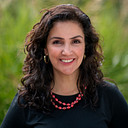7 Key Takeaways from Empatthy’s Virtual Conference, “Boosting Women’s Philanthropy in Ibero-America”
Women’s philanthropic leadership is on the rise around the globe! I had the honor to appear with my friends and colleagues as part of Empatthy’s virtual conference, “Boosting Women’s Philanthropy in Ibero-America” on March 19, 2021, as well as participate in several masterclasses on how to start a giving circle during this past week. I was excited to receive an invitation from Rosa Madera with Empatthy, a graduate of Philanthropy Together’s Launchpad For You program.
It was such a delight to partner with Rosa, Juan Carlos Diaz Bilbao, Jeannie Sager, Carmen Stevens, and the incomparable Sondra Shaw-Hardy. Congratulations to the team on a successful event! I look forward to continuing our partnership to start more giving circles in Latin America!
Hosted in Chile and attended by speakers and participants all over the world, the wonderful two-hour kick-off event highlighted the inspiring and historic efforts of community-based giving models in Latin America, within the context of similar models in North America.
Here are my 7 biggest takeaways from participating in this event.
- Women’s philanthropy has always been here, and will continue to grow stronger. Historically, women have always been givers — whether as caregivers or as philanthropists. In the past, women’s philanthropy has been under-studied and under-represented, but the more we learn about it, the more encouraging the research turns out to be. This research, such as new reports coming from the Women’s Philanthropy Institute, only proves that women’s philanthropy will continue to grow.
- Women’s leadership is not an American or Latin American ideal, but something we can all work toward together. The funding models that we see in both the United States and abroad offer unique opportunities for women to take a more vocal stance in philanthropy — but these opportunities are neither distinctly American or Latin American. By learning from each other and collaborating through events like this virtual conference, we can work toward a brighter and gender equal future.
- Relying on trust-based methods of giving will open lines of communication between grantmaking organizations and their grantee partners. This was a point that my colleagues and I brought up again and again in our conversation. Giving circles are based on trust, which means that women’s circles amplify that trust based on the natural empathy between members. The giving circle model also allows for significant relationship-building with the circles’ grantees — no more thousand-page grant requests or proof of use. Instead, grassroots organizations and community leaders can rely on this trust-based giving model in order to use their funds effectively as they see best.
- Collaboration- and community-based funding models (like giving circles) are the key to amplifying community activism in both North America and Latin America. One of the many things I love about giving circles is that they maximize the historic and traditional community funding models of Latin America while utilizing modern sensibilities and communication systems to achieve maximum impact. They also integrate well with our established social systems — who wouldn’t choose meeting for a drink or over a meal over meeting in a stuffy boardroom?!
- Furthermore, Latin American giving circles are just starting to become prevalent, and supporting these circles will lead to wider philanthropic support around the world. I bring this up because although the United States did not invent the giving circle model, it is currently leading the way in terms of circle structures that can be easily replicated and taught to others. By combining the resources and existing structures of US-based organizations (like Philanthropy Together, the Women’s Philanthropy Institute, and Women’s Giving Circles International), we can extend successful giving circle models to Latin America — and from there, to other parts of the world.
- Programs like Launchpad for Hosts offer critical training to provide start-up instruction and guidance for giving circle networks outside of the US. There is an appetite to start giving circles in community foundations and other host institutions in Latin America. Philanthropy Together is one organization working to support organizations like Amigos de San Cristobal in Chiapas, Mexico through our Launchpad for Hosts program. Leadership, training, and resource options for “host” organizations make it possible to guide the creation and growth of more giving circles around the world. Backbone organizations, like Philanthropy Together, make it possible for programming like this to exist. Foundations and large philanthropic intermediaries need to support these training programs, not just the giving circles that rely on them.
- We should never make assumptions about who can give and who cannot give, because we will always be surprised. This final point ties it all together — although research shows that single women tend to give more than single men, and married couples tend to give more in general, we cannot let our assumptions about giving color the ways we reach out to potential donor communities. Because who knows? I may be able to give $20 today, but you — or your daughter, your cousin, your best friend’s kindergarten teacher — may be able to give a thousand tomorrow. No matter how much you give, YOU are a philanthropist — giving time, talent, and treasure to move your community forward. We will never know what we can do unless we work toward it TOGETHER!
I am so delighted that I was able to take part in this conversation, happy to do it in my first language, feeling the warmth that Latinoamericanos exude — it was sad not to sit at the same table with my colleagues, but until we meet again in person, I am glad we had the opportunity to bring this conversation to such a lively and supportive international audience.
To my friends, sisters, and colleagues in Chile, the United States, and beyond, I say THANK YOU and GRACIAS for being a part of this critical conversation — and here’s to the next wave of giving circles and collaborative philanthropy!
